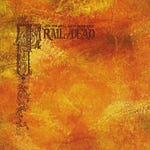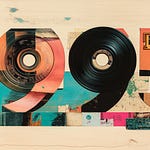Let’s take a trip back to 1994, a time when alternative rock was still finding its way out of the underground and into the mainstream spotlight. Grunge had already kicked the door down, but beneath the surface, there was a whole lot of action happening with smaller bands, many of whom were just a major-label deal away from breaking out. The music scene, especially on the West Coast, was in this weird transition—grunge was becoming the sound of the moment, but hardcore punk roots were still deep, and new forms of rock were bubbling up in the cracks.
This is where Wool steps into the picture, a band that brought a unique blend of D.C. hardcore and alternative rock to the scene. Formed by brothers Peter and Franz Stahl, who had previously been part of the influential punk band Scream, Wool was already connected to some pretty heavy hitters. If you know your punk history, you’ll recognize Scream as the band where Dave Grohl cut his teeth before joining Nirvana. That’s right, the Stahls were already tied to a growing rock legacy by the time Wool got off the ground.
By the early ‘90s, the brothers had relocated from the intense D.C. punk scene to the laid-back vibes of Los Angeles. The move west marked a shift not only geographically but also sonically for the band. L.A. was a breeding ground for new sounds at the time, with bands like Jane’s Addiction and Concrete Blonde pushing the boundaries of what rock could be. Wool tapped into that creative energy, fusing their hardcore roots with the fuzzier, grittier sounds emerging from the alt-rock underground.
Their story really starts to pick up steam in 1994 with the release of Box Set on London Records. Wool had already made some noise with an EP and a few singles, but Box Set was their big shot—a full-length album that captured the energy of their live shows and gave the band a chance to evolve beyond their hardcore beginnings. The album is a mix of mid-tempo rockers, slower, moodier tracks, and a few faster-paced songs that echo their punk past.
Wool wasn’t a grunge band in the strictest sense, but Box Set certainly shares some of that DNA. The album’s raw, unpolished sound, mixed with melodic vocals and heavy riffs, fit right into the alternative rock scene that was still taking shape. But Wool was different—they weren’t just following trends; they were blending the aggression of hardcore with more experimental, atmospheric touches. Tracks like B350 and Chances Are showcase the band’s ability to create a mood and let it simmer over time, a contrast to the more straightforward rock songs on the record.
The local L.A. scene was a melting pot of sounds at the time, and Wool was right there in the thick of it. Their sound had a bit of everything—hardcore punk, alternative rock, grunge, and even some metal thrown in for good measure. It was an era when bands could experiment and find their own niche, and Wool did just that. The band’s lineup included drummer Chris Bratton of Drive Like Jehu, another band pushing the boundaries of what post-hardcore could sound like, and Al Block of Concrete Blonde, who added some serious weight to the rhythm section.
What’s cool about Box Set is how it still feels relevant today. The production holds up remarkably well, and the songs don’t feel stuck in the ’90s alt-rock formula. You can hear influences from bands like Faith No More and Pixies, especially in the way Peter Stahl uses his voice—shifting between melodic crooning and harsher, more intense vocals that reflect the band’s punk background.
One of the key themes that come up when discussing Box Set is this idea of a band balancing between the underground and the mainstream. Wool wasn’t exactly a radio-friendly unit shifter, but they weren’t afraid to embrace melody and structure in their songwriting. Even though the album didn’t make a massive commercial splash, it’s still a solid example of the kind of music that was bubbling under the surface in the ’90s—music that was willing to take risks and didn’t fit neatly into one genre.
Wool’s time in the spotlight was brief, but their impact is still felt. After the release of Box Set, Franz Stahl even went on to play with the Foo Fighters for a couple of years, joining Dave Grohl in yet another musical chapter. That connection alone adds a layer of intrigue to Wool’s story, but the real reason to revisit Box Set is for the music itself. It’s an album that captures a specific moment in the alternative rock timeline—a moment when anything seemed possible, and bands were breaking down the barriers between punk, rock, and everything in between.
So, if you’re in the mood for some deep-cut 90s rock that doesn’t sound like every other grunge band out there, Box Set is definitely worth digging into. It’s the kind of album that reminds you just how diverse and experimental the ’90s music scene was, especially in a city like L.A. where the sun was shining, but the music was anything but bright.
Make Your Voice Heard!
In our quest to explore the depths of 90s Rock, we rely on you, our listeners. Your suggestions drive our show – be it an underrated classic or a forgotten gem. By joining our DMO Union on Patreon, you help us stay independent and ad-free and gain the power to vote on and choose the albums we dive into each year. Together, let's unearth the treasures of 90s Rock, one listener-powered episode at a time.















Share this post